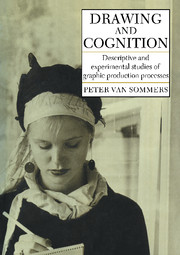Book contents
- Frontmatter
- Contents
- Preface
- 1 Basic executive constraints in drawing
- 2 Maintaining paper contact, anchoring, and planning
- 3 The reproduction of rectilinear figures
- 4 The production of curvilinear forms
- 5 The impact of meaning on executive strategies
- 6 Simple representational drawing
- 7 Difficult graphic tasks: A failure in perceptual analysis?
- 8 Stability and evolution in children's drawings
- 9 Innovations, primitives, contour, and space in children's drawings
- 10 Children's repeated drawings: How are innovations coded?
- 11 The pragmatics of everyday graphic production
- References
- Index
4 - The production of curvilinear forms
Published online by Cambridge University Press: 07 October 2011
- Frontmatter
- Contents
- Preface
- 1 Basic executive constraints in drawing
- 2 Maintaining paper contact, anchoring, and planning
- 3 The reproduction of rectilinear figures
- 4 The production of curvilinear forms
- 5 The impact of meaning on executive strategies
- 6 Simple representational drawing
- 7 Difficult graphic tasks: A failure in perceptual analysis?
- 8 Stability and evolution in children's drawings
- 9 Innovations, primitives, contour, and space in children's drawings
- 10 Children's repeated drawings: How are innovations coded?
- 11 The pragmatics of everyday graphic production
- References
- Index
Summary
Chapter 1 revealed that particular actions can often be shown by analysis to be special cases of more general principles of action. For example, a right-to-left horizontal movement or a top-to-bottom vertical movement can be located within a spectrum of preferred stroke directions, and may not in such a context be of special significance. And certain features of action that seem at first to be unified can be shown to be functionally differentiable – for example, fanning movements may be distinguished from finger flexion movements, and starting position can be shown to have different properties from stroke preferences. Third, the analysis may simply be descriptive, or it can be pursued to the practical logic that makes sense of the generalities and distinctions. I cannot promise that the analysis of the production of curvilinear forms will clarify all the issues, but it does have some of the features I have reviewed: There are some useful general principles and one or two unexpected disjunctions in the data, and I have tried to make sense of the concrete underpinnings of the structure that emerges.
The drawing of arcs
Geometrically we define arcs as portions of circles, and so it is somewhat surprising to discover that arc production is not only divergent from circle production, but is in fact quite its antithesis. I have analyzed the production of arcs of two lengths: 90 degrees (quarter circles) and 180 degrees (half circles).
- Type
- Chapter
- Information
- Drawing and CognitionDescriptive and Experimental Studies of Graphic Production Processes, pp. 72 - 94Publisher: Cambridge University PressPrint publication year: 1984
- 1
- Cited by



